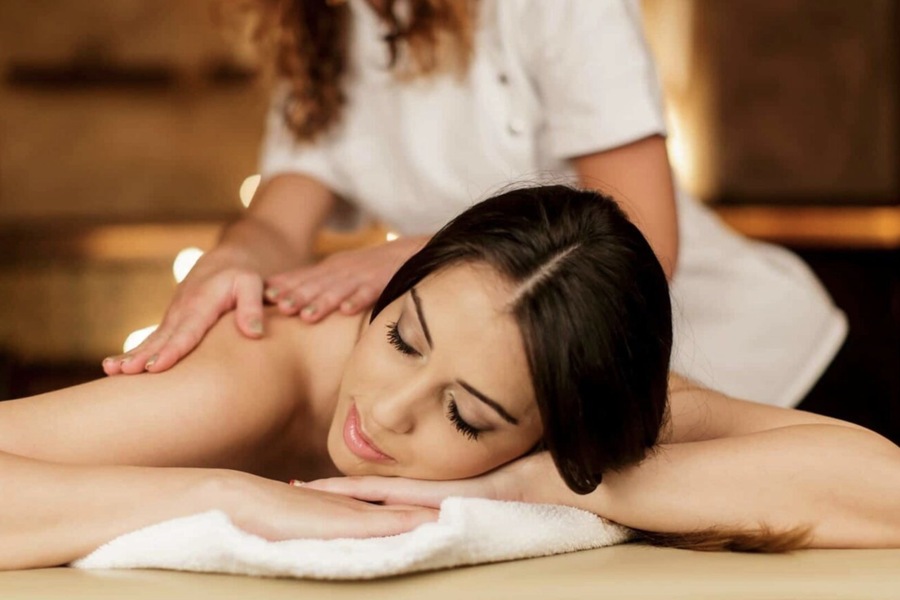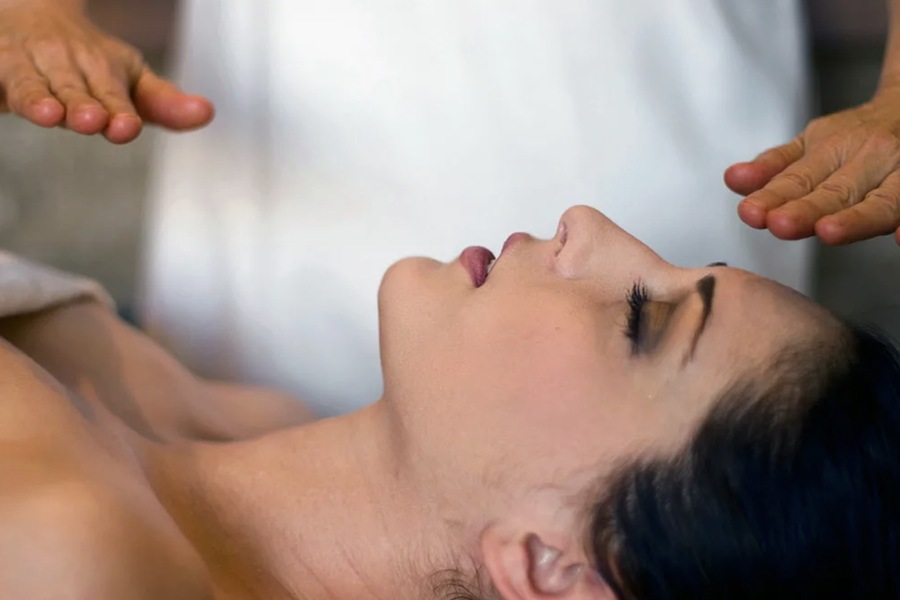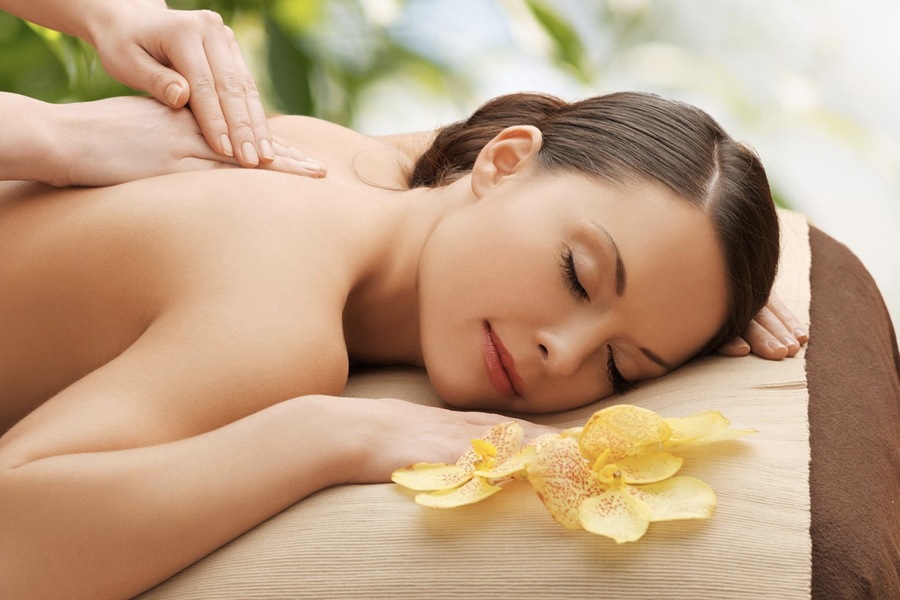Since ancient times, massage has played a vital role in promoting both physical and mental well-being. The ancient Greeks, Egyptians, and Chinese used massage techniques for therapeutic purposes, recognizing their potential to heal the body and calm the mind. Today, massage is a widely practiced form of therapy that strengthens the immune system, enhances the quality of sleep, relieves muscle tension, and improves blood circulation and lymphatic drainage. At a Dubai massage centre, you can experience these time-honored techniques. In this article, we explore some of the most popular massage techniques, their benefits, specific methods, and which individuals they are best suited for.
Thai Massage: A Tonic and Relaxing Experience
Thai massage is often referred to as “assisted yoga” due to its combination of deep tissue massage, acupressure, and stretching techniques. Originating in Thailand over 2,500 years ago, it is a unique blend of Indian Ayurvedic principles and traditional Chinese medicine.
Technique
Thai massage involves rhythmic pressing and stretching of the entire body. The therapist uses their hands, elbows, knees, and feet to twist, rub, and stretch the body in a series of yoga-like positions. The stretching targets muscle groups while acupressure is applied to specific points along energy lines, or “Sen” lines, in the body.
Benefits
Improves flexibility and joint mobility by stretching muscles.
Stimulates the body’s energy flow, boosting both physical and mental vitality.
Reduces muscle tension and promotes relaxation.
Relieves pain in areas like the lower back, neck, and shoulders.
Who is it for?
Thai massage is ideal for people who feel physically stiff, engage in physical activity regularly, or suffer from musculoskeletal discomfort. It is also beneficial for individuals seeking a rejuvenating experience that combines relaxation with energy restoration.

Aroma Massage: Deep Relaxation with Essential Oils
Aroma massage is a gentle, soothing technique that incorporates the use of essential oils to enhance relaxation and promote healing. The oils are selected for their specific therapeutic properties and are absorbed into the skin during the massage, providing both physical and emotional benefits.
Technique
The therapist uses smooth, flowing hand movements to apply light pressure while working the essential oils into the skin. The focus is on promoting deep relaxation rather than muscle manipulation. Popular oils include lavender for stress relief, eucalyptus for respiratory benefits, and peppermint for revitalization.
Benefits
Promotes deep relaxation by calming the nervous system.
Enhances emotional well-being through the aromatherapy effect.
Improves skin hydration and nourishment.
Reduces stress, anxiety, and tension headaches.
Who is it for?
Aroma massage is perfect for those who experience high levels of stress, suffer from insomnia, or simply seek a gentle and calming experience. It is also suitable for individuals with sensitive skin, as the oils can be selected to match their skin type.
Relaxation Massage: Relieving Stress Through Gentle Movements
Relaxation massage is focused on inducing a state of calm by using slow, rhythmic movements. Unlike deep tissue massages, it avoids intense pressure, making it ideal for people looking to unwind rather than relieve muscle pain.
Technique
The massage therapist uses light, slow strokes and gentle kneading. No intense movements or vigorous techniques are employed. The emphasis is on creating a peaceful atmosphere to promote a sense of tranquility.
Benefits
Eases mental and emotional stress.
Helps with sleep disorders by calming the nervous system.
Increases circulation and improves oxygen flow to the muscles.
Reduces muscle stiffness and promotes overall relaxation.
Who is it for?
This type of massage is best for individuals who experience chronic stress, anxiety, or tension. It is particularly suitable for those who prefer a light touch and want to focus on relaxation rather than physical therapy.
Anti-Cellulite Massage: Smoothing the Skin and Boosting Circulation
Anti-cellulite massage is a technique designed to reduce the appearance of cellulite by breaking down fatty deposits and improving blood flow to the skin. The treatment is known for its ability to improve skin tone, elasticity, and smoothness.
Technique
The therapist uses firm, rhythmic motions such as kneading, rolling, and tapping to stimulate blood circulation in areas prone to cellulite, such as the thighs, buttocks, and abdomen. Specialized massage tools or suction cups may also be used to enhance the results.
Benefits
Breaks down fat deposits, reducing the appearance of cellulite.
Stimulates circulation and lymphatic drainage, helping the body eliminate toxins.
Improves skin elasticity, leaving it firmer and smoother.
Enhances the body’s metabolic rate and fat-burning ability.
Who is it for?
Anti-cellulite massage is ideal for individuals looking to reduce cellulite and improve the overall appearance of their skin. It is especially beneficial for those who want to tone and firm their body and improve their skin texture.
Lymphatic Drainage Massage: Stimulating the Lymphatic System
Lymphatic drainage massage is a gentle technique designed to encourage the natural movement of lymph fluid, which helps remove toxins and waste from the body. This massage is particularly effective for reducing swelling, detoxifying the body, and boosting the immune system.
Technique
The therapist uses light, rhythmic strokes and gentle pressure to stimulate the lymphatic system. Movements are slow and repetitive, focusing on lymph nodes and channels to encourage the outflow of lymph fluid.
Benefits
Reduces swelling and fluid retention, particularly after surgery or injury.
Detoxifies the body by improving the removal of waste products.
Enhances immune function by stimulating lymph flow.
Reduces the appearance of cellulite and promotes skin elasticity.
Who is it for?
This massage is ideal for individuals with conditions such as lymphedema, post-surgical swelling, or those looking to detoxify their body. It is also suitable for people who want to improve their immune system function or address fluid retention issues.

Hot Stone Massage: A Healing Therapy with Ancient Roots
Hot stone massage, or stone therapy, involves the use of smooth, heated stones placed on specific points of the body to promote relaxation and healing. This technique is believed to been first used in Ancient China, where it was thought that the heat from the stones could stimulate the body’s healing processes.
Technique
Heated stones are placed on key points of the body, such as the spine, hands, and feet. The therapist may also use the stones to massage the muscles, applying gentle pressure. The heat from the stones penetrates deep into the muscles, helping to ease tension.
Benefits
Deeply relaxes muscles, relieving tension and stress.
Promotes better sleep by calming the nervous system.
Enhances blood circulation and lymphatic drainage.
Reduces pain from conditions like arthritis and fibromyalgia.
Who is it for?
Hot stone massage is best suited for individuals suffering from muscle pain, tension, or chronic conditions like arthritis. It is also an excellent option for people who find it hard to relax and want to experience a deeply soothing treatment.
Health Massage: A Comprehensive Therapeutic Approach
Health massage, also known as therapeutic massage, combines various techniques to target specific health concerns. This type of massage can include both active and passive movements, and the intensity of the techniques may vary depending on the client’s needs.
Technique
A combination of methods is used, including deep tissue massage, myofascial release, and trigger point therapy. The therapist may alternate between gentle strokes and more intense pressure, focusing on problem areas that require therapeutic attention.
Benefits
Relieves chronic pain and muscle tension.
Improves mobility and range of motion in joints.
Enhances the body’s natural healing process by promoting circulation.
Reduces inflammation and aids in the recovery from injuries.
Who is it for?
Health massage is ideal for individuals recovering from injuries, those experiencing chronic pain or stiffness, and people looking to improve their overall physical well-being. It is particularly beneficial for athletes or individuals with musculoskeletal issues.
Conclusion
Massage is an ancient practice that offers numerous physical and mental benefits, from relieving muscle tension and pain to promoting relaxation and overall wellness. Each type of massage serves a different purpose and can be tailored to meet individual needs, making it a versatile and powerful tool for healing and relaxation. Whether you seek relief from stress, pain management, or simply wish to enhance your overall well-being, there is a massage technique suited just for you.
Biker, traveler, drummer, Bauhaus fan and RGD member. Performing at the fulcrum of beauty and mathematics to craft meaningful ideas that endure. Concept is the foundation of everything else.
